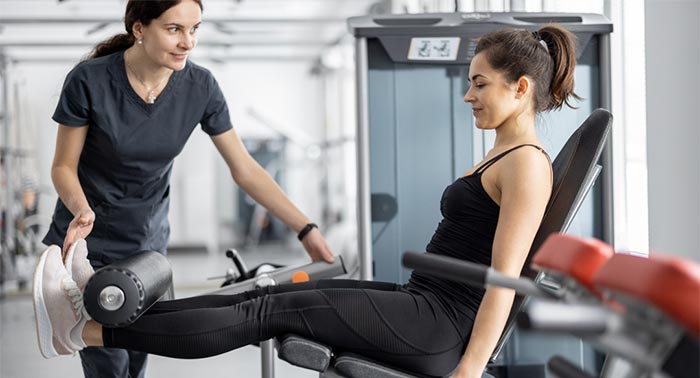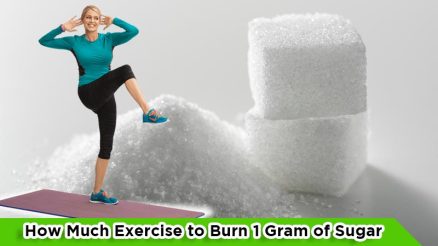If you ever injured yourself during work, free time activity, exercise, or an intense workout, a rehabilitative exercise would be a part of the healing process. If you are unable to go on with your daily life routine due to the pain of the injury, rehabilitative exercise is something you’d get recommended by your doctor.
However, keep in mind that rehabilitative exercises aren’t the same as physical therapy, even though they are very similar. That’s why, in this article, you’ll learn everything you need to know about rehabilitative exercise, what it consists of, and how it can benefit you, so keep on reading!
What are Rehabilitative Exercises?
Rehabilitative exercises are a part of physical medicine and rehabilitation and the main goal is to help people with physical impairment or injuries that can’t go on with their daily life as usual. Whether it’s an injury or a condition, rehabilitative exercises are the best way to provide pain relief, reduce inflammation, and help with vital body logic, such as improved balance, prevention of falling, and more.
What many people don’t know is that it can also have an impact on the mind as much as it does on the body. For example, these exercises can help people reduce anxiety caused by injury and immobility, and they can also drastically improve mood. Fatigue is another thing that rehabilitation exercises can help with, and that’s why it’s a great way to progress and get better.
Without rehabilitative exercises, it would be harder to use the injured muscles again and strengthen them to make progress, improve daily life, allow individuals to handle the daily routine as usual, and most importantly, shorter the amount of time needed to get back to the regular exercise and workout plans.
Rehabilitative exercises depend on the area of the injury, but most often include stretching exercises to exercise the soft tissue and improve the range of motion, relaxation exercises, strength and power exercises, and even endurance exercises. Therefore, you might do anything from single-leg standing for balance improvement to walking on a line, hip thrusts, leg lifts, knee bends, resistance bends, hamstring stretches, and more.
Benefits of Rehabilitative Exercise
The biggest benefits of rehabilitative exercise include progress, strengthening the needed muscles, reducing inflammation, improving mobility, improving daily life by helping people go on with their daily routine as usual, and more. It can also have psychological benefits for people who are injured and unable to participate in regular activities or even handle their day-to-day tasks or work.
By doing rehabilitative exercises, the body gains strength, people experience pain relief which is much needed after an injury, and improved movement and range of motion are also important benefits.
Rehabilitation isn’t something scary or difficult, and almost anyone with average injuries can be recommended rehabilitation to speed up the recovery process. For example, I remember my brother having rehabilitation after a broken arm, which drastically helped.
How Rehabilitative Exercises Make You Stronger
Rehabilitative exercises, in the first place, help reduce the pain and swelling but also regain movement and a standard range of motion in the injured area. With simple but thoughtful exercises such as stretching, rehabilitation helps relax the tissues, stretch the muscles, and improve strength.

Bit by bit, rehabilitative exercises can change and improve over time as time progresses. Starting with motion first and switching to resistance bands or weight, later on, is a usual process of rehabilitative exercises.
As a result, after rehabilitative exercises, you shouldn’t feel much pain in the injured area, you’ll benefit from an increased range of motion, more strength in the area, and of course, no more swelling and inflammation.
Conclusion
Rehabilitation is something many of us have gone through at least once in our lifetime. Whether you’ve sprained your ankle, broken your arm, or had a sports injury, rehabilitation is most likely going to be recommended by the doctor.
You can think of rehabilitation as a way of getting back in shape, and even when the injury still hurts or doesn’t allow you to handle the most basic things in your daily life, rehabilitation can help.
With the methodical approach, rehabilitation exercises are very helpful in a variety of injuries and conditions and they can really help make the initial step forward, no matter how difficult or painful it can be at first.
Getting started with rehabilitation is going to speed up the process and it’s even crucial at times to regain full range of motion after an injury.
FAQs (Frequently Asked Questions)
Why is exercise rehabilitation important?
Rehabilitation exercise is super important to help reduce post-injury symptoms and also to help work the muscles and tissue around the injured area to help it get back to its prime shape.
What are the 4 principles of rehabilitation?
There are 4 main principles (phases) of rehabilitation which start with pain and swelling control. After that, improving the range of motion and flexibility, followed by improvements in strength and balance, to the last phase which is sports-specific or balance training.
What is the most important part of rehabilitation?
The most important part of the rehabilitation is the beginning phase, the pain and swelling control. Starting might be difficult but it is crucial to start treating the injured area, reduce pain and swelling, and move towards gains.
How can exercise rehabilitation help prevent future injuries?
By improving mobility, relaxing the tissue, stretching the muscles, and helping gain strength in specific areas of the body, people can be more prone to exercise in the future.
Why is rehabilitation important in injury recovery?
Injuries are painful and they can stop us from doing even daily activities. That’s why rehabilitation is important as it helps reduce the pain, stretch the muscles, and gain control and strength in the injured areas for a faster recovery after the injury.
What are the three major components of rehabilitation?
The main components of rehabilitation are just like goals, and the main goals are to regain flexibility and strength, improve endurance and balance, and help boost coordination.





